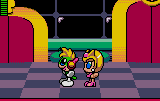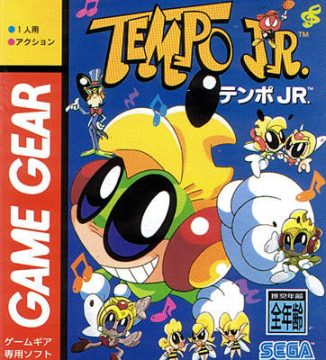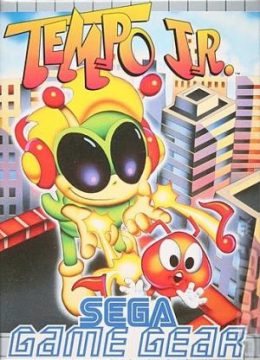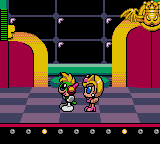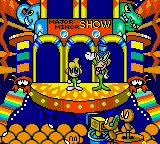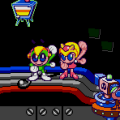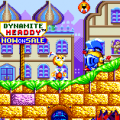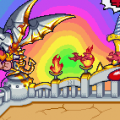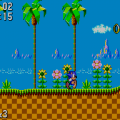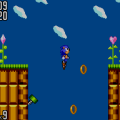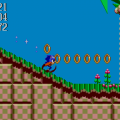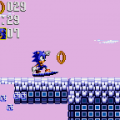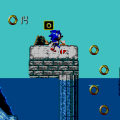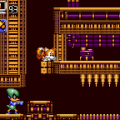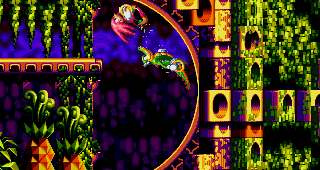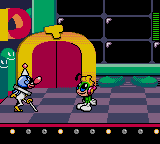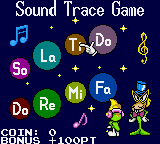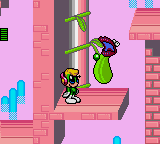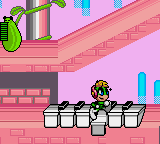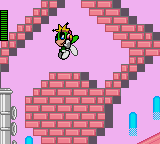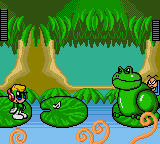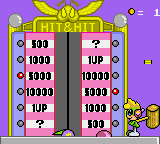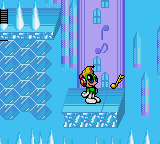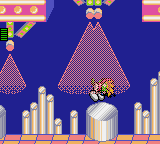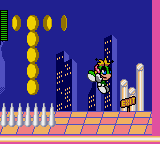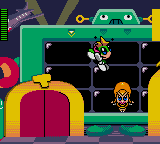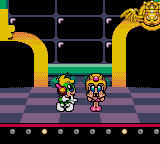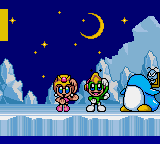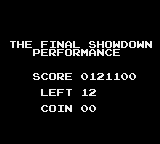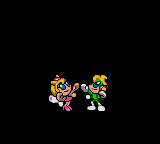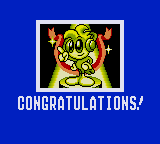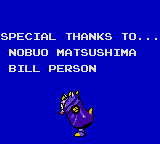- Tempo
- Tempo Jr.
- Super Tempo
Tempo Jr‘s existence is a testament to what plans Sega had in mind when they were making these games. The company was apparently confident enough with the Tempo franchise that they had two developers working with it at the same time. SIMS, a small company known for their work on the Master System and Game Gear, worked on the portable installment. (This may explain why Tempo Jr. saw a European release where the original Tempo didn’t.) So Tempo Jr. can hardly be expected to be an exact mirror of its 32X cousin. However, that might be one of the game’s stronger points.
One of its most striking aspects (at least compared to its predecessor) is how much the game omits. Platforming aside, there also isn’t a lot to say about Tempo Jr. There are two mini-games (Simon Says and a strongman game), but that’s about it. The Game Gear just wasn’t as powerful as the 32X, and even late in its life, Tempo’s repeat appearance on the Major Minor Show couldn’t accommodate everything from his first. Some of the features from the first game that are missing here are dancing as a gameplay mechanic, Katy as a power-up (Tempo still dances with her after each boss fight, though), power-ups overall and different endings based on your score.
Admittedly, cutting so many major features makes this a very simple game, but that’s precisely what makes it work. As good as these features might have been individually, there was just something about them that refused to work together. Each one pulled Tempo in disparate directions, preventing the game from ever fully realizing any one facet of itself. Since many of them are absent in Tempo Jr., the game is finally free to do one thing and do it well.
And that thing is relaxation. An odd choice, but an understandable one in context: Sega released the game as part of the Sega Club, a line of games aimed specifically at younger players. So what better way to reach that audience than with non-demanding gameplay? While this approach does backfire on the game in a few places (the boss fights spring to mind), it more often works in the game’s favor. The levels are a breeze to walk through. Their slow pace affords the player enough time to appreciate one of the best looking games the Game Gear has to offer. The game is a perfect fit for the handheld system, and certainly a more focused experience than what came before it.
Unfortunately, that’s not how contemporary critics saw the game. Famitsu, one of the few publications to give Tempo Jr. any attention, gave the game a score of 18/40. It’s easy to see why: people had already criticized the original Tempo for being too easy, so a sequel that’s even easier would only compound the problem.
